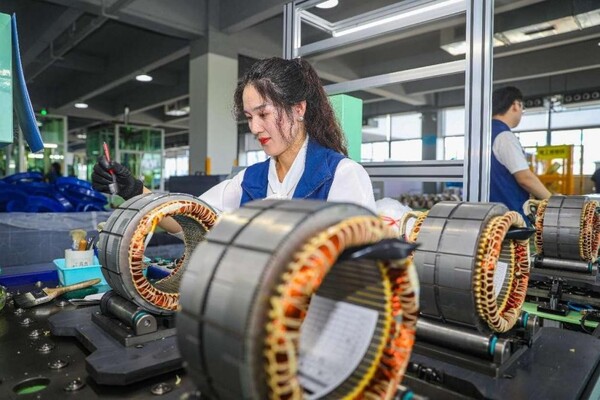By Xu Lingyuan, People’s Daily
China, for the second consecutive year, leads the world with 26 science and technology innovation clusters in the top 100, according to an early release from the 2024 edition of the World Intellectual Property Organization’s (WIPO) Global Innovation Index (GII).
Carsten Fink, chief economist of WIPO, noted that four of China’s innovation clusters ranked among the global top 10, including Shenzhen-Hong Kong-Guangzhou, Beijing, and Shanghai-Suzhou clusters.
Notably, Nanjing jumped from 12th to 9th place in 2024, and several Chinese innovation clusters not previously in the top 100 have now entered the rankings.
This overall trend reflects China’s significant increase in technological output, particularly in international patents. Much of this innovation is happening in China’s cities and metropolitan areas, which is a remarkable achievement. Across several key metrics, the technological innovation capabilities of many Chinese industries are now at the forefront of the world.
The science and technology innovation clusters in the GII refer to cities or city clusters. The global ranking is based on two key metrics. The first one focuses on the location of inventors listed in published patent applications under the WIPO Patent Cooperation Treaty (PCT). The second one considers the authors listed in published scientific articles. The WIPO compiles and ranks these metrics to determine the most active regions for technological activity globally.
The growing number of innovation clusters highlights China’s dynamic and promising technological innovation potential.
China has been a global leader in the number of patent applications for years. According to the World Intellectual Property Indicators 2021 issued by the WIPO, China filed the most patent applications globally. The China National Intellectual Property Administration (CNIPA) received 1.59 million patent applications, nearly half of the world’s total.
Shen Changyu, head of the CNIPA, said that in the first half of 2024, the number of patent transfers and licenses by Chinese universities and research institutions increased by 22.2 percent year-on-year, with a batch of high-value patents rapidly applied in high-end, intelligent, and green industries. The added value of China’s patent-intensive industries reached 15.3 trillion yuan ($2.15 trillion), with their share in the country’s GDP rising to 12.7 percent.
The global impact of Chinese scientific papers is also steadily increasing. A 2023 report on Chinese scientific papers, published by the Institute of Scientific and Technical Information under China’s Ministry of Science and Technology, revealed that for the first time, China ranked first worldwide in the number of papers published in the most influential journals across all disciplines. China also led the world in both the number of high-level international journal papers and citations.
China is seeing an emergence of more and more high-value intellectual property (IP). As of June this year, China had nearly 4.43 million valid domestic invention patents, with 72.8 percent of them held by enterprises, which indicated a growing trend of corporate innovation. The number of high-value invention patents per 10,000 people reached 12.9, while the number of valid registered Chinese domestic trademarks hit a record high of 45.9 million.
Between 2014 and 2023, there were 54,000 patent applications related to generative AI worldwide. Of these, more than 38,000 were filed by China, accounting for 70.3 percent of the total, placing China at the top globally.
From 2016 to 2023, China recorded 3,637 applications and 1,664 grants for green and low-carbon inventions in Belt and Road partner countries and relevant organizations, with an average annual growth rate reaching 26 percent and 21.3 percent respectively. From 2020 to 2023, the growth rate further increased to 65.4 percent and 49.6 percent.
Currently, China is strengthening international IP cooperation. Sheng Li, deputy head of the CNIPA’s International Cooperation Department, noted that China has established stable cooperative relationships with over 80 countries and regions and is currently implementing more than 200 IP cooperation agreements.
China is actively expanding its opening up in the IP sector and is deeply involved in global IP governance under the framework of the WIPO.
China has successfully joined the Hague Agreement Concerning the International Deposit of Industrial Designs and the Marrakesh Treaty. It has also played a role in promoting the conclusion of WIPO treaties on IP, genetic resources, and related traditional knowledge.
Chinese applicants continue to rank among the top globally in terms of applications in the three major systems of the WIPO: the PCT international patent system, the Hague Agreement Concerning the International Deposit of Industrial Designs, and the Madrid System.
As of June this year, the number of valid foreign invention patents in China reached 919,000, and the number of valid registered foreign trademarks in China hit 2.135 million, both showing steady growth.












